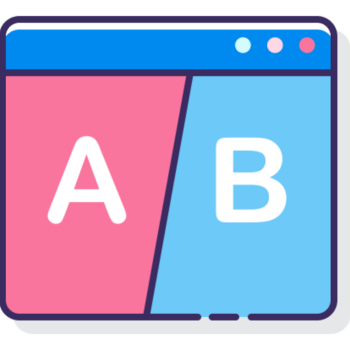
If you want to make more money with your business, one good place to start is on your order forms.
Think about it…
You have a prospect with a credit card already in their hand. They’re in a buying mood.
So there’s a good chance that if you put a related offer in front of them (the proverbial, “you want fries with that?”), they’ll take it. And that means you’ll make more money with every customer who walks through your door.
So how do you create a backend or upsell offer that gets your prospects clicking the “Yes” button? Like this…
1. Make Sure The Upsell Enhances The Main Offer

The very first thing you need to do is make sure any upsell offer is tightly related to the main offer. In fact, not only should it be tightly related, ideally your upsell should enhance the use or enjoyment of your main offer.
Take the classic example at a fast food restaurant. I guarantee that if you walked into McDonalds and ordered a hamburger, any well-trained clerk would ask if you wanted fries and/or a drink with that. And a lot of people say yes to this offer, because fries and/or a drink enhances the enjoyment of the burger.
Now you can do the same thing, no matter what you’re selling. For example:
- You’re selling a meal-planning app. Offer a low-fat cookbook as an order form upsell.
- The main offer is a copywriting course. You can offer personal copy critiques on the backend.
- Your main product is all about setting up and running a successful blog. You can offer tools on the backend, such as a package of useful WordPress plugins and professional themes.
- Your main product is a “how to get out of debt” course. You can offer an upsell that includes items such as a debt-management workbook and personalized debt-management counseling.
- You main product is a set of kettlebell training videos. You can offer the kettlebells themselves as an upsell.
In other words, don’t just toss any ol’ offer in front of your prospects. Be sure your upsell and main offer go together like… well, like hamburgers and fries. J
Next up…
2. Offer An Irresistible Deal

Dropping a related offer in front of your prospect is great. But turning that offer into an irresistible deal is even better.
Take the fast food example again. If you order a burger with a small fries and drink, the clerk will ask you if you want to “biggy size” the order for just a small extra charge. The deal is irresistible. You get a LOT more food for just a tiny bit more money.
No matter what you’re selling, you can do the same thing.
For example:
“I usually charge $997 per month for this sort of coaching. But as a valued member of my new copywriting club, you’ll get a special price of just $497 per month for this same high-quality coaching…”
Next…
3. Use Short-Form Copy

You’ve got an eager prospect sitting in front of your order form with their credit card in hand. Now is not the time to put another long sales letter in front of them. They’re eager to buy. Putting another wall of text in front of them might just have them hitting the back button and abandoning the order form!
You see, you’ve already done the hard work of getting them into the necessary emotional state needed to make a purchase. You’ve already built your credibility. You’ve already established trust. You don’t need to do these things again.
So what you need to do now is simply focus on the benefits of the upsell offer. In fact, your upsell may be nothing more than a benefit-driven headline, a list of benefits, and a call to action.
TIP: As always, test to find out for sure what your audience responds to the best. Test different headlines. Test your bulleted list of benefits. You might even test short-form copy against a short sales video.
Next…
4. Frame The Price

The next thing for you to remember is that you’ve already sold your prospect on purchasing the main offer. They’ve already agreed to whatever price you’re charging.
So when you extend the upsell offer, you’ll want to frame the price so that it focuses on the upsell only.
Let me give you an example…
Let’s suppose you’re selling a home study course for $99, with an upsell offer for $25 for an app:
When it comes time to ask for the order, do NOT do this: “Would you like to add this offer to your order for a total of $125 for the course and app?”
Suddenly that sounds like a lot. The prospect is going to start second-guessing their purchase. And you could lose the entire sale.
Instead, focus on the upsell price only: “Would you like to add this app to your order for just $24 more?”
Ahhhh… that’s better. That sounds doable. And since the prospect is already planning on spending $99, that extra $24 doesn’t sound like any big deal.
It’s all in how you frame it. 🙂
Next…
5. Create A Sense Of Urgency

Nothing gets people clicking the order button like a real sense of urgency. And one great way to create this sense of urgency is by making your upsell offer scarce.
For example, you might create a one-time offer. This is an offer that’s only available right now. If the prospect doesn’t grab it, they won’t be able to get it later. Or if the product is available elsewhere, the prospect will need to pay full price.
A good example of this is when you go shopping on a site like Omaha Steaks. If you spend a certain amount, such as $50, you’ll get a list of “add on specials.”
These are tremendous deals that you can ONLY take advantage of while you’re on the order form. You can still buy the steaks themselves later, but you’ll pay through the nose to do it.
That creates scarcity and a sense of urgency that gets people agreeing to order your upsell.
For example:
“Special one-time offer: add this meal-planning app to your order right now, and you’ll get it for 50% off the regular price! If you leave this page, this offer disappears for good… so click here now to grab your discount before it’s gone!”
Next…
6. Use A Strong Call To Action

The good copywriting rules apply to your upsell just as they do to your main offer. And that means you can’t just drop the order link in front of your prospects and expect them to click it. Instead, you need to provide a strong call to action. This means you tell prospects what to do next, and give them a good reason to do it.
For example:
Click here to add this app to your order – and remember, this special offer disappears when you leave this page, so order now!
Generally, your upsell page is going to have two options. One option is “Yes, add this to my order.” The other option is, “No thank you, I don’t want this.”
Those should be the only two options on the page. Prospects will either add to their order and continue making the purchase, or they’ll skip your offer and just stick with their original order.
Now here’s a little trick you might consider testing and using…
Phrase your “yes” and “no” options in a way that helps persuade people to click the “yes” options.
For example, let’s suppose you’re selling some sort of weight-loss information. Your option buttons might look like this:
“Yes, I want to get ready for the beach!”
“No, I don’t want to get rid of my love handles. J”
See how that works?
The “yes” option is positive and provides a benefit. The “no” option forces the prospect to agree with something that they probably don’t really agree with. That’s going to make them stop and reconsider your offer.
Here’s another example:
“Yes, I want to save money on heating and cooling bills!”
“No, I don’t want to save money.”
Another:
“Yes, I want to boost my conversion rates and make more money!”
“No, I don’t want to make more money.”
One more…
“Yes, I want to run a new marathon PR!”
“No, I don’t mind running as slow as a turtle. J”
And finally…
7. Make It Easy

If you followed all the tips above, then you have a prospect who’s as ready as she’ll ever be to place her order. At this point, your goal is to make it as easy as possible for her to place that order and grab the upsell.
Don’t make your prospects jump through hoops. Don’t slip unnecessary steps between them and their order. Don’t put obstacles in the way. Because if you do any of this, the prospect is likely to lose their enthusiasm and abandon their shopping cart.
Here are the dos and don’ts to follow:
- Do make it one-click easy. If you’re presenting an upsell right after the customer has already filled in the order form, then make it as easy to buy the upsell as clicking a button. In other words, do NOT make your prospect fill out the order form or their credit card all over again.
- Don’t make them go through a gauntlet of upsells. Sometimes marketers throw three, four, five or more upsells in front of the prospect. They can’t get to the order form without accepting or declining these offers. Or, worse yet, they can’t get to their purchase without seeing all these offers.
- Don’t do that to your customer! Instead, put one or at most two well-placed offers in front of them. But if they decline, send them straight to the order form. Don’t make them go through a gauntlet of offers, which will make them feel like carnival workers are barking at them.
- Don’t make them “register” before ordering. If you need your customers to create an account, then have this account co-created during the purchasing process. Even if the amount of “work” for the customer is the same, framing is the key here. If a customer is suddenly forced to “create an account” before they can place an order, they may just dump their cart.
Now let’s wrap things up…
Conclusion
You’ve heard the saying, “strike while the iron is hot.” When it comes to sales, the iron is about as hot as can be when you have a prospect filling out an order form. That’s why it’s a great time to “strike” by offering an upsell offer they can’t refuse. So boost your sales by inserting upsells on your order forms today – and boost your conversions using the seven surefire tips you just discovered!




















.png)

















